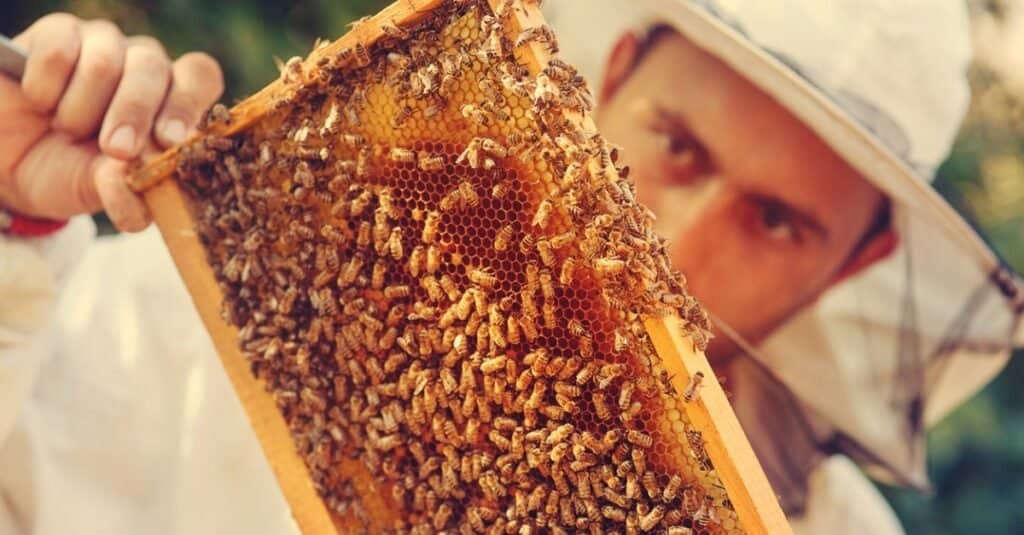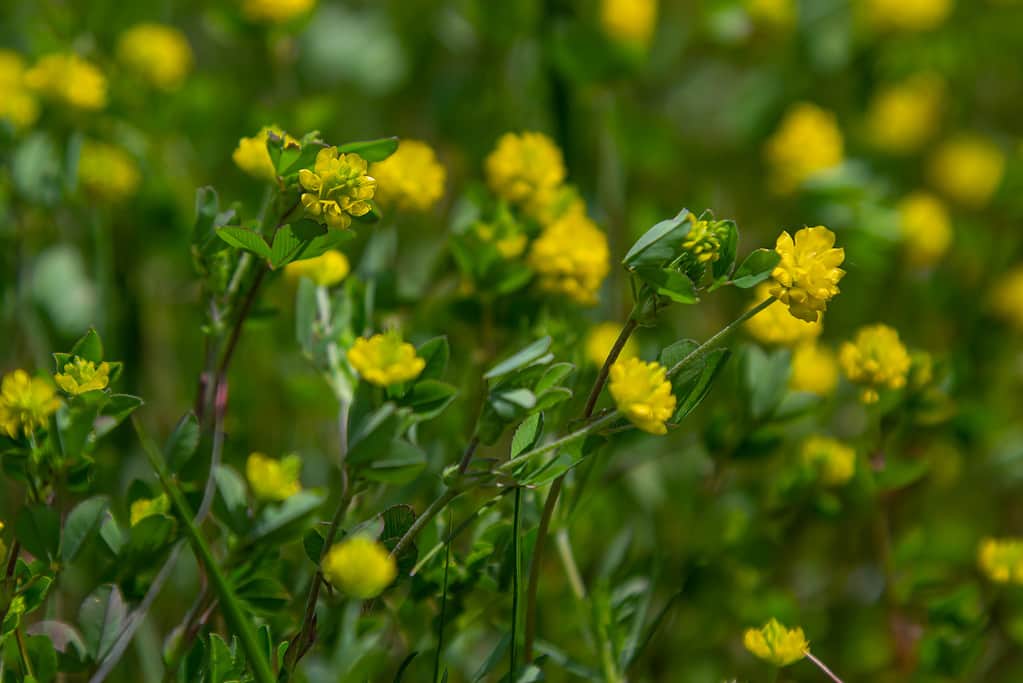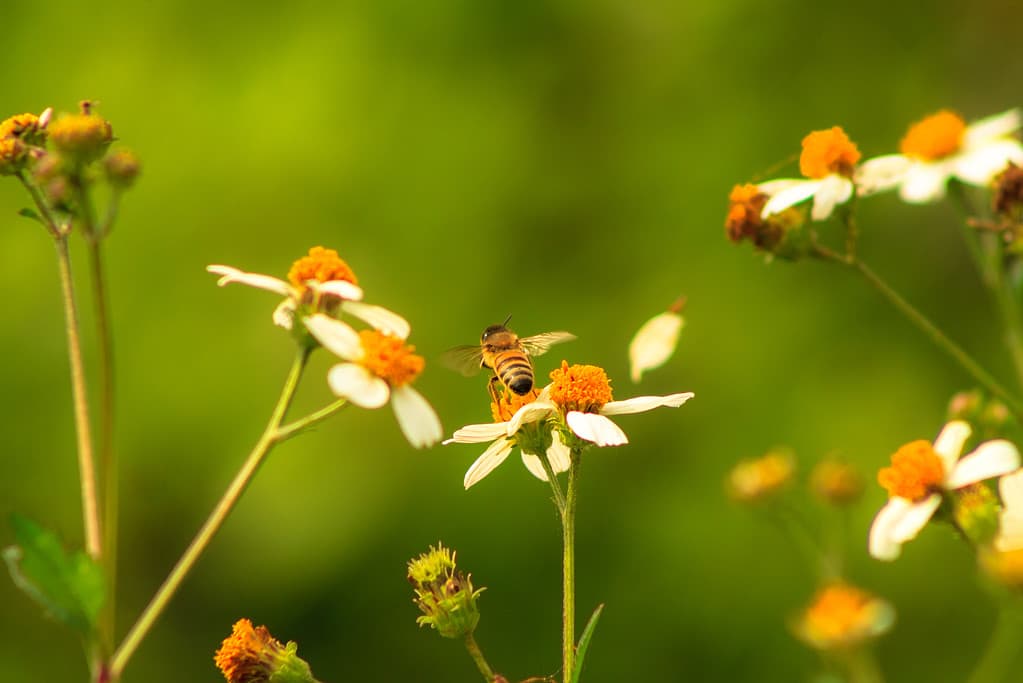Honey is a precious golden liquid that honeybees make from plant nectar and is a common ingredient in recipes. Honey is sold in multiple forms, including raw, regular, and pure, or comb, crystallized, liquid, and even whipped! Throughout history, people have used honey as medicine. Honey is high in antioxidants, offers polyphenols, and can even be a natural cough suppressant.
Now that we know more about the benefits of honey, let’s explore the top honey-producing states in the U.S. These states contribute significantly to the country’s honey yield. Each state also offers unique opportunities for visitors to immerse themselves in the world of beekeeping! Read on to learn all about the major honey-producing states. You will gain a deeper appreciation for the natural liquid gold that flows from coast to coast!
North Dakota

All worker bees are female, and they are essential to the function and survival of bee colonies. They are responsible for many tasks like collecting pollen and nectar and defending the nest.
©iStock.com/djiledesign
North Dakota is an undefeated champion among the top honey-producing states in the U.S. The upper midwestern state takes the crown for this title year after year as it boasts annual production levels of approximately 31.2 million pounds of honey! This success is attributed to the state’s vast expanse of prairies and wildflower fields. These natural areas spread all across North Dakota, provide the perfect environment for honeybees to thrive. To be more specific, clovers are widely dispersed in just about every county, with varieties including yellow sweet clover (the most popular), along with white, red, and subterranean clover. All of these biennial legumes provide an abundant source of nectar, which explains why honeybees love this state just as much as its human residents!
Along with its native flora, North Dakota’s climate and soil conditions are conducive to beekeeping. For background, soil health and texture directly impact the quality, quantity, and visitation patterns of pollinators since different species have varying environmental preferences. Some pollinators prefer well-drained, sandy soils, while others prefer very silty soils or hard-packed, clay-like soils. Nevertheless, the pollinators in North Dakota — such as the native bees, butterflies, and moths — prefer the loamy soil that is scattered throughout the state.
California

The yellow-faced bumble bee is native to California and is actually an even better pollinator than honeybees!
©chris-mueller/iStock via Getty Images
The Golden State, California, is another of the top honey-producing states in the U.S. Similarly, the diverse agricultural landscapes found throughout the state make it a perfect powerhouse for pumping out lots of honey each year. With boundless wildflowers, almond orchards, and acres of blooming citrus fields, the honeybees in California have their pick of an array of delicious choices — all of which produce the most tasty honey flavors! Knowing their annual production rate averages around 11.6 million pounds, it is easy to understand why the bees love this state.
Beyond that, California also ranks as the second top honey-producing state in the U.S. due to its favorable climate and long growing season. Bees in California have ample opportunity to forage the southern deserts, Sierra forests, orchards, and coastline to produce honey virtually year-round. In fact, this state is home to over 1,600 native bee species, including millions of non-native honey bees. Overall, the Golden State rightfully earned its nickname for both its abundance of real gold AND liquid gold, aka honey!
Texas

Bees use their sticky leg hairs to remove, store, and carry pollen from plants to their hive.
©iStock.com/William Jones-Warner
Bees require two things to survive: nectar and pollen. Nectar provides busy working bees with enough energy to travel from plant to plant for cross-pollination. Pollen, on the other hand, provides the bees with protein and other nutrients. It is also fed to bee larvae as food. Because of these two requirements, Texas is truly the perfect place for honeybees to call home! This is likely due to the state’s diverse landscapes, ranging from plains and forests to various wildflower fields. All of these regions provide plentiful pollen and nectar for the 800 native honeybee species that live in Texas. With that in mind, it’s understandable how the state produces over 8.3 million pounds of honey each year! This puts Texas in third place for being one of the top honey-producing states in the U.S.
Montana

Wild or field clover is a herbaceous annual flowering plant in the bean or legume family Fabaceae. It is one of the bees’ favorite flowers, which is why clover honey is so popular in Montana!
©Oleg Marchak/iStock via Getty Images
Montana is an excellent place for honey production due to its unique fauna, which includes a variety of flowering plants, weeds, and wildflowers. The long, cool nights in the state have also proven to help the bees recover faster than in other state’s warmer, more humid climates. Moreover, Montana’s wide-open landscapes and rich agricultural heritage contribute to its thriving honey industry. Some of Montana’s most famous honey varieties come from a variety of flower sources —often based on clovers, such as sweet clover honey and white clover honey.
If the prospects of this sound exciting, stop by a local beekeeper apiary to truly submerge yourself in the mesmerizing world of honeybees. Or, if you desire a more hands-on experience, opt to book an interesting and educational honey-production workshop! This experience allows guests to help assist during each step of the honey-making process to get honey from the hive straight to your very own jar. It truly doesn’t get any fresher than that!
Florida

Wildflower honey is a popular honey variety in Florida, sought after for its powerful nutrients, antioxidants, and alleged healing properties. It also contains local allergens, which people often consume to minimize the symptoms of seasonal allergies.
©Christopher Parker/iStock / Getty Images Plus via Getty Images
Like California and Texas, Florida’s warm climate and diverse flora make it a honey lover’s paradise — for both people and bees! This state’s fertile lands and blossoming tropical fruit orchards ensure a yearly bountiful honey harvest. In fact, Florida produces 7.3 million pounds of honey annually! Attributing to its overall success is the state’s year-round blooming season. This provides bees with a continuous supply of pollen and nectar, which enables them to stay active in producing honey throughout the year. Honey is typically harvested between late March and July in Florida. However, April and May seem to be the preferred harvesting months in the more temperate regions of the state.
Additionally, Florida’s diverse ecosystems, including citrus groves, Tupelo swamps, and wildflowers, contribute to the state’s unique and flavorful honey varieties. This unique combination of tropical weather and rich floral landscape makes Florida a prime location for honeybees to thrive. Some of the most popular in the state include orange blossom honey, wildflower honey, and Tupelo honey.
If honey is your thing, stop by Wewahitchka for the annual Tupelo Honey Festival. Featuring an array of local honey varieties and intriguing farmers market stalls, this event is the perfect place to sample and purchase an assortment of locally harvested honey. Plus, you can even learn the steps the beekeepers follow to make their legendary honey! This event also teaches its guests about beekeeping’s unique challenges and opportunities in a subtropical environment. Beyond the honey festival, visitors can stop by Florida year-round to take part in tasting tours, visit honey farms, or even try their hand at beekeeping under the guidance of local experts!
The photo featured at the top of this post is © Aleksandr Rybalko/Shutterstock.com
Thank you for reading! Have some feedback for us? Contact the AZ Animals editorial team.







